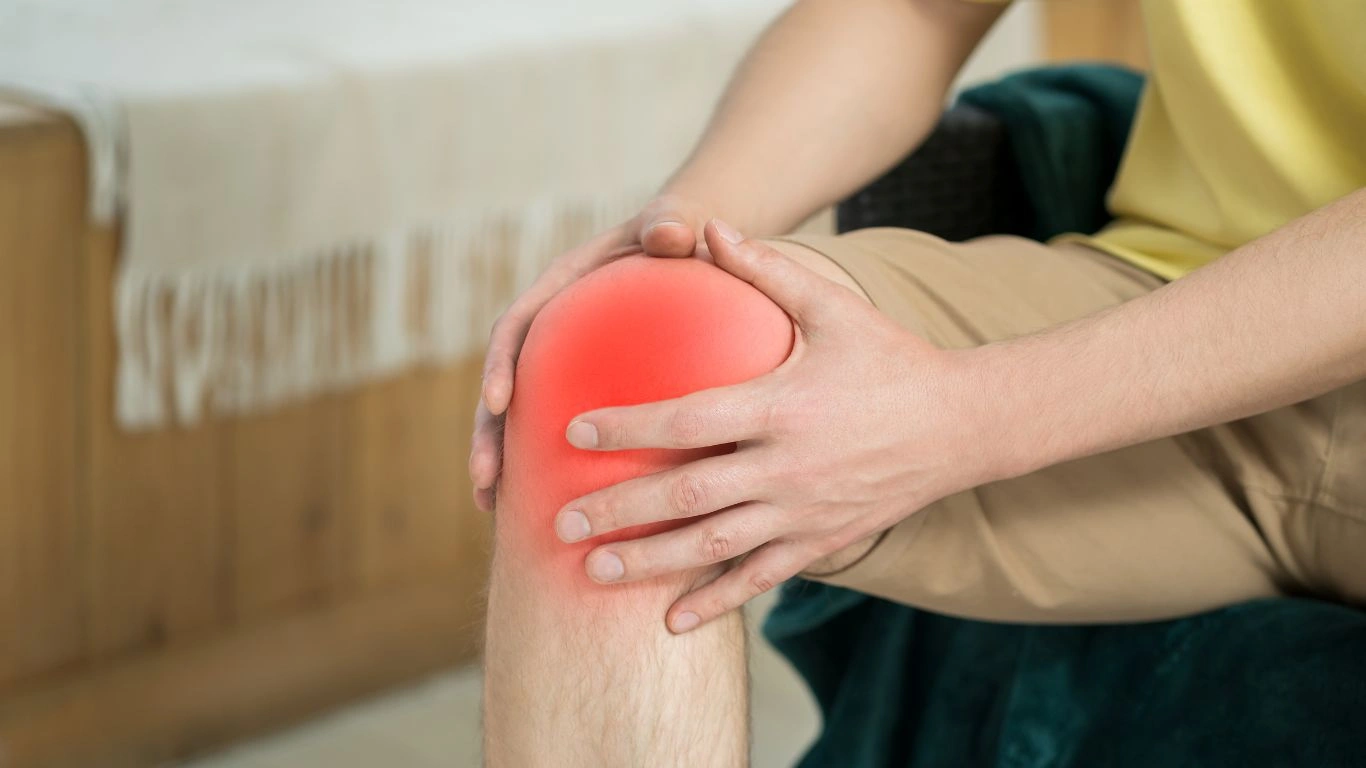How Vitamin D Supports Rheumatoid Arthritis Management for a Better Quality of Life
As someone who’s spent years working closely with individuals living with rheumatoid arthritis (RA), one thing I’ve learned is how crucial the connection between RA and various factors, such as vitamin D, can be to improving overall health. This might seem like a simple link at first glance, but when we dig deeper, we start to realize just how essential vitamin D is in managing RA symptoms. As someone in the medical field, it’s exciting to see how a nutrient like vitamin D can potentially ease the burden of this chronic condition.
The Link Between Rheumatoid Arthritis and Vitamin D Deficiency

Vitamin D is often called the “sunshine vitamin” because our bodies produce it naturally when exposed to sunlight. However, in a world where many of us spend more time indoors or live in regions with limited sunlight, vitamin D deficiency is more common than we might realize. For people with rheumatoid arthritis, this deficiency can have serious implications on both their immune function and joint health.
But why does vitamin D matter so much when it comes to RA? Well, RA is an autoimmune condition where the body’s immune system attacks its own tissues, particularly the joints. Vitamin D plays a role in regulating the immune system, and it has been suggested that a deficiency could exacerbate the symptoms of RA by increasing inflammation and the risk of developing other autoimmune conditions.
What Does Research Say About Vitamin D and RA?
Over the years, numerous studies have explored the connection between vitamin D and rheumatoid arthritis. While the findings are still being explored, a consistent trend emerges: vitamin D deficiency is commonly seen in people living with RA. In fact, some research suggests that individuals with RA may have lower levels of vitamin D compared to those without the condition. This makes it essential to consider how vitamin D can help modulate the immune system, potentially offering relief from inflammation and joint pain.
As a healthcare professional, I’ve seen firsthand how increasing vitamin D levels can sometimes help ease symptoms in my patients. Many of my patients with RA report feeling less fatigued and experiencing less joint pain after improving their vitamin D intake, especially if their levels were low to begin with. It’s one of those small changes that can have a big impact, and it’s often worth checking in with a doctor to see if supplementation might be necessary.
How Vitamin D Impacts Immune Function in RA

To truly understand why vitamin D is so important in the context of RA, let’s take a deeper dive into how vitamin D functions within the body. As I mentioned earlier, vitamin D helps regulate the immune system. But it goes a step further by suppressing the expression of pro-inflammatory cytokines, which are signaling molecules that contribute to inflammation.
In individuals with RA, these inflammatory molecules can go haywire, causing persistent swelling and pain in the joints. Vitamin D has the potential to “calm” this inflammatory response. While vitamin D isn’t a cure-all for RA, it can certainly make a difference when it comes to modulating the immune system’s response and preventing further damage to the joints.
Think of it like this: When you’re low on vitamin D, your body is essentially running on low fuel. This can make it harder for your immune system to keep inflammation in check, leading to those flare-ups and joint stiffness. But when you’re on top of your vitamin D levels, your body has the resources it needs to help maintain a more balanced immune response.
What Are the Symptoms of Vitamin D Deficiency in RA Patients?
So, how do you know if you’re dealing with a vitamin D deficiency, especially if you already have rheumatoid arthritis? The symptoms can often overlap with those of RA itself, making it tricky to pinpoint without proper testing. However, some signs that you might be lacking in vitamin D include:
- Increased joint pain: A lack of vitamin D may contribute to more intense joint discomfort.
- Fatigue: If you’re feeling more drained than usual, it could be linked to insufficient vitamin D.
- Weakened bones: Since vitamin D is critical for bone health, a deficiency may make your bones more susceptible to fractures.
- Muscle weakness: Vitamin D deficiency can also lead to muscle weakness and discomfort.
If you’re experiencing any of these symptoms, it’s a good idea to consult with a healthcare professional. A blood test can determine whether you’re deficient in vitamin D, and your doctor can help guide you on the best course of action, which may include supplementation or lifestyle changes.
How Much Vitamin D Do RA Patients Need?

The amount of vitamin D a person needs can vary depending on their age, geographic location, and other individual factors. However, for individuals with rheumatoid arthritis, ensuring adequate vitamin D intake can be particularly important. The general recommendation for adults is around 600-800 IU (International Units) per day, but those with RA or other chronic conditions may need higher amounts to maintain optimal levels.
Many RA patients I’ve worked with have found that supplementing with vitamin D can make a noticeable difference in how they feel. It’s important to note, however, that more isn’t always better. Too much vitamin D can lead to toxicity, which can cause a range of issues like nausea, kidney problems, and calcium buildup in the blood. Therefore, it’s important to follow your doctor’s recommendations for supplementation.
In the next section, we’ll explore practical ways you can boost your vitamin D levels naturally through diet and lifestyle changes. But remember, managing rheumatoid arthritis is all about a holistic approach—vitamin D is just one piece of the puzzle!
Boosting Vitamin D Levels Naturally: Diet and Lifestyle Tips

Now that we know how important vitamin D is for managing rheumatoid arthritis, you’re probably wondering how to make sure you’re getting enough. The good news is that there are several ways to boost your vitamin D levels without having to rely solely on supplements. While supplementation can be helpful, I always recommend taking a holistic approach to health—combining dietary changes, lifestyle habits, and even sunlight exposure can really work wonders for your RA symptoms.
1. Sunlight: The Natural Vitamin D Source
Let’s start with the obvious one—sunlight. When your skin is exposed to the sun, it naturally produces vitamin D. But as many of us know, getting enough sun exposure can be tricky. Living in areas with long winters or spending most of your day indoors can make it harder for your body to produce vitamin D. I’ve worked with many RA patients who found that simply getting outside a little more, even for short periods, made a noticeable difference in their symptoms.
Here’s the deal: for most people, around 10-30 minutes of midday sun exposure a few times a week is usually enough to produce a healthy amount of vitamin D. Of course, this depends on several factors like your skin tone, geographic location, and the time of year. Fair-skinned individuals might need less sun, while those with darker skin may need a bit more. But, if you’re like me and live somewhere with limited sunlight for half the year, it’s always a good idea to explore other options as well.
2. Foods Rich in Vitamin D

Next up, let’s talk about food. The right foods can help you maintain healthy vitamin D levels. While there are only a few natural food sources of vitamin D, incorporating these into your diet can definitely give you a boost. As someone who’s seen the power of a balanced diet firsthand in my patients with RA, I can’t stress enough how much food can support your overall well-being.
Here are some excellent food sources of vitamin D:
- Fatty fish: Salmon, mackerel, tuna, and sardines are some of the richest sources of vitamin D. I’ve recommended these to many of my RA patients, and they’ve loved the boost in energy and reduction in joint stiffness.
- Fortified foods: Many foods like milk, orange juice, and cereals are fortified with vitamin D. These can be a great addition if you struggle to get enough through natural sources.
- Egg yolks: Eggs are a simple and convenient way to add some vitamin D to your diet. Just make sure you’re eating the yolk, as that’s where most of the vitamin D is found.
- Beef liver: It’s not for everyone, but beef liver is an excellent source of vitamin D. If you’re adventurous with your food, it’s worth considering.
- Mushrooms: Some types of mushrooms, especially those exposed to ultraviolet light, contain vitamin D. They’re a great plant-based option if you’re vegetarian or vegan.
Try to include a variety of these foods in your diet to keep your vitamin D levels on track. If you’re not a fan of fish, there are plenty of other ways to get your dose through fortified foods or plant-based sources like mushrooms and fortified plant milks. A balanced approach is always the best!
3. Vitamin D Supplements: When You Need Extra Support
While I’m a big believer in natural sources, there are times when vitamin D supplements can be a game-changer—especially if your levels are significantly low. Many of my RA patients find that taking a supplement alongside other lifestyle changes can really help fill the gaps. It’s not a one-size-fits-all solution, though, and it’s important to talk to your healthcare provider before starting any new supplement regimen.
There are two main types of vitamin D supplements:
- Vitamin D2: This is the plant-based version of vitamin D, and it’s often found in fortified foods and supplements.
- Vitamin D3: This is the more potent form of vitamin D, typically derived from animal sources. It’s the preferred choice for most people because it’s more effective at raising blood levels of vitamin D.
If your doctor recommends a supplement, make sure to follow the suggested dosage. Too much vitamin D can have negative side effects, like nausea, kidney stones, and even heart problems. So, it’s important to monitor your intake and ensure you’re not overdoing it.
The Role of Vitamin D in Reducing Inflammation and Joint Pain

As we discussed earlier, rheumatoid arthritis is all about inflammation. Your immune system is in overdrive, attacking your own joints and tissues. Vitamin D helps modulate this immune response by reducing the production of inflammatory cytokines, which are responsible for much of the pain and swelling in RA. But that’s not all—there’s growing evidence that vitamin D may also play a role in reducing the risk of RA flares.
In my experience, I’ve seen how some patients report feeling less stiffness and fewer flare-ups after boosting their vitamin D intake. It’s almost as if their immune system has more of a “steady hand,” keeping inflammation at bay. And when you’re living with RA, even a little relief can make a big difference in your quality of life.
While vitamin D isn’t a magic bullet for RA, it certainly plays a significant role in the overall management of the disease. When combined with other treatment strategies, like disease-modifying anti-rheumatic drugs (DMARDs), physical therapy, and healthy lifestyle choices, vitamin D can help you feel more in control of your RA and its impact on your daily life.
Is There Such a Thing as Too Much Vitamin D?
Of course, like anything, it’s possible to have too much of a good thing. While vitamin D is essential, excessive amounts can lead to toxicity, which may cause a range of symptoms such as nausea, weakness, and kidney problems. That’s why it’s important to get your vitamin D levels tested regularly, especially if you’re taking supplements.
When you’re working with your doctor to optimize your vitamin D intake, they’ll likely recommend regular blood tests to ensure your levels stay within a healthy range. This way, you can avoid the pitfalls of too much vitamin D while still reaping its benefits.
Integrating Vitamin D with Other RA Management Strategies

By now, you’re probably starting to get a clear picture of how important vitamin D is in managing rheumatoid arthritis. However, it’s crucial to remember that vitamin D is just one piece of the puzzle. RA is a complex condition that requires a multifaceted approach to treatment, and while vitamin D can certainly help with symptom management, it doesn’t replace other essential strategies like medications, physical therapy, or lifestyle changes. When it comes to managing RA, I’ve always encouraged my patients to take a holistic approach—considering every angle to improve their quality of life.
Combining Vitamin D with Medications
Rheumatoid arthritis is an autoimmune disorder, and while vitamin D can help modulate the immune system and reduce inflammation, it’s not a substitute for the medications most RA patients rely on. Disease-modifying antirheumatic drugs (DMARDs), biologics, and corticosteroids are still the foundation of RA treatment. Vitamin D doesn’t interfere with these medications, and in some cases, it may even help enhance their effectiveness by supporting immune function and reducing inflammation.
I’ve had patients tell me that when they focused on optimizing their vitamin D levels, they were able to experience less frequent flare-ups and sometimes lower their medication doses with their doctor’s guidance. It’s not about replacing medications; it’s about working in tandem with them to manage RA in a way that supports long-term health.
One thing to keep in mind: if you’re on corticosteroids (like prednisone), vitamin D levels can sometimes be lower because steroids can interfere with calcium metabolism. This means if you’re on long-term steroid treatment, monitoring your vitamin D levels becomes even more crucial. I’ve seen cases where correcting vitamin D deficiency helped some patients feel less fatigued and more energetic, making it easier to stick to their medication regimen and physical therapy exercises.
Physical Activity and Vitamin D: A Powerful Combination
When it comes to rheumatoid arthritis, movement is key. I know, I know—when you’re in pain, it’s the last thing you want to hear. But let me tell you, gentle exercise paired with a healthy dose of vitamin D can make a massive difference. In my experience, keeping joints moving with low-impact activities like swimming, walking, or yoga can reduce stiffness and improve flexibility. And the best part? Physical activity has been shown to help increase the body’s natural production of vitamin D!
Exercise helps the body process nutrients more effectively, so getting a bit more active can indirectly support your vitamin D levels. Plus, staying physically active helps combat the fatigue that’s often associated with RA. It’s a win-win!
Many of my patients with RA who are dedicated to maintaining an active lifestyle report feeling more energized and less stiff in the morning after a workout or a walk. They also experience fewer flare-ups. When you pair that physical activity with the joint-supporting benefits of vitamin D, you’re giving your body the best shot at managing RA long term.
Vitamin D and Its Role in Overall Wellness

Beyond its role in managing RA symptoms, vitamin D is essential for overall health. It plays a huge part in maintaining bone health, cardiovascular function, and even mental well-being. For individuals with RA, maintaining good bone density is particularly important, as the disease and the medications used to treat it can sometimes lead to weakened bones.
Vitamin D helps your body absorb calcium, which is vital for keeping your bones strong. If you’re already dealing with the potential for bone loss due to RA or its treatments, keeping your vitamin D levels in check can help reduce your risk of fractures and osteoporosis. That’s why I often suggest my patients not only monitor their vitamin D intake but also focus on calcium-rich foods like dairy, leafy greens, and fortified alternatives.
Let’s not forget the mental health side of things. Chronic pain, fatigue, and the unpredictability of RA can take a toll on your mental well-being. Interestingly, research suggests that vitamin D deficiency may be linked to depression and anxiety. I’ve seen it in my practice—patients who address their vitamin D deficiency often report feeling less depressed and more optimistic about their ability to manage RA. It’s amazing how such a simple nutrient can have such far-reaching effects on your overall health.
Should You Get Your Vitamin D Levels Tested?
If you haven’t had your vitamin D levels checked in a while, I highly recommend it. A simple blood test can determine if you’re deficient and help guide the next steps in your treatment plan. If you’re already living with rheumatoid arthritis, it’s especially important to regularly monitor vitamin D levels, as deficiency is more common among RA patients.
As always, consult with your healthcare provider before making any significant changes to your routine. They can help you interpret your test results and determine if you need to increase your vitamin D intake through diet, supplements, or lifestyle changes. Remember, it’s all about finding the right balance for your unique needs!
References & Further Reading
- Vitamin D and RA: A Deeper Dive
- Comprehensive RA Management Strategies
- Understanding Inflammation in RA
Disclaimer
The information provided in this article is intended for general informational purposes only and should not be construed as medical advice. Always consult with your healthcare provider before making any changes to your treatment plan, including adjustments to vitamin D intake or other supplements. Each individual’s needs are unique, and your doctor can help guide you in the best direction based on your specific condition and health history.

Tarra Nugroho is a dedicated Nurse Practitioner with a strong foundation in family and preventive care. She brings both compassion and clinical expertise to her practice, focusing on patient-centered care and health education. As a contributor to Healthusias.com, Tarra translates medical knowledge into clear, empowering articles on topics like women’s health, chronic disease management, and lifestyle medicine. Her mission is simple: help people feel seen, heard, and informed—both in the clinic and through the content she creates. When she’s not caring for patients, Tarra enjoys weekend hikes, plant-based cooking, and curling up with a good health podcast.






